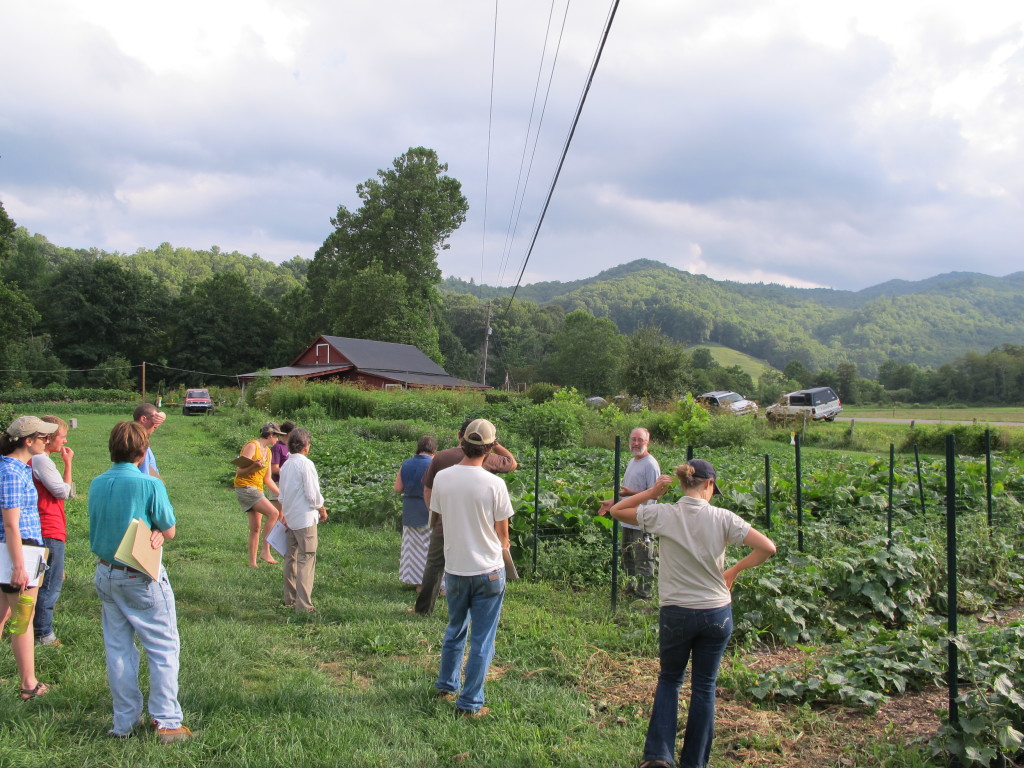
Every year, the North Carolina Herb Association holds the Wild Herb Weekend in Valle Crucis, NC. This year, Marc taught about woody ethnobotany and identifying plants by family. Often, herbs are sold after they have been harvested and dried, so though herbalists have extensive knowledge on the uses of these plants, many cannot necessarily identify these plants. Marc’s classes helped all who attended to cultivate a more complete understanding of plants. Many herbalists want to collect their own plants for medicines (this can often make the medicine more effective and, depending on the plant, affordable), so Marc’s class served as an important addition to the herbalist education available throughout the weekend.
Throughout the weekend, Marc and I tabled for Plants and Healers International. In addition to information about PHI, we made information about numerous plant and nature based events and organizations available. There was strong interest in PHI’s mission, Marc’s online course at Botany Everyday, and the life and work of Frank Cook.
It was a great weekend of connecting with a great network of plant-minded people. We also enjoyed a performance by none other than Doug Elliot, who’s stories spanned from having a swarm of bees drop on his head whilst 50 feet up a Tulip tree (Liriodendron tulipifera) to songs about something that starts with an S and ends with a T (you might call it scat).
Marc and I ended out weekend with a hike to a waterfall behind the conference center, a hike that was the site of Marc’s last plant walk class with Frank. We walked back with a few of the interns and the director from the conference for an impromptu mushroom walk, then headed to the old Appalachian State University farm, where we unexpectedly joined an organic weed and pest management class held by the NC State Cooperative Extension. Marc and I shared some of our experiences with managing farms organically and agroforestry, and soaked up information about pests and disease issues. Marc enjoyed seeing where the farm had come since he helped to manage it, noticing how the alleys of trees had grown so fast and their efforts at taming Rosa multiflora hadn’t quite come to fruition.
While walking around the farm, Marc noticed an unknown Lamiaceae growing between the rows. I saved some seeds, thinking this could be a good crop similar to Chia (Salvia hispanica). Further research concluded this was Galeopsis tetrahit, a poisonous member of the Lamiaceae. This was the first poisonous Lamiaceae I’d come across, which just shows that the only rule that rules follow is that there are exceptions to rules. Upon being informed of the nature of this plant, the seeds were promptly roasted and placed in my compost. That being said, they smelled delicious when roasted…
We also enjoyed observing an abandoned plot that had been taken over by weeds, the horror! Fortunately, as with most weeds, these were edible. Hundreds of pounds of lambs quarters (Chenopodium sp.), pigweed (Amaranthus sp.), and purslane (Portulaca oleracea) were growing up and around cabbage, carrots, and a multitude of other crops. We could only imagine the harvest possible if these were harvested as greens and the sown crops allowed to grow the rest of the season! Or, better yet, if the pigweed and lambs quarters were harvested for their seeds.
So much abundance abounds when one has the eyes to see…
-By: Hayden Stebbins